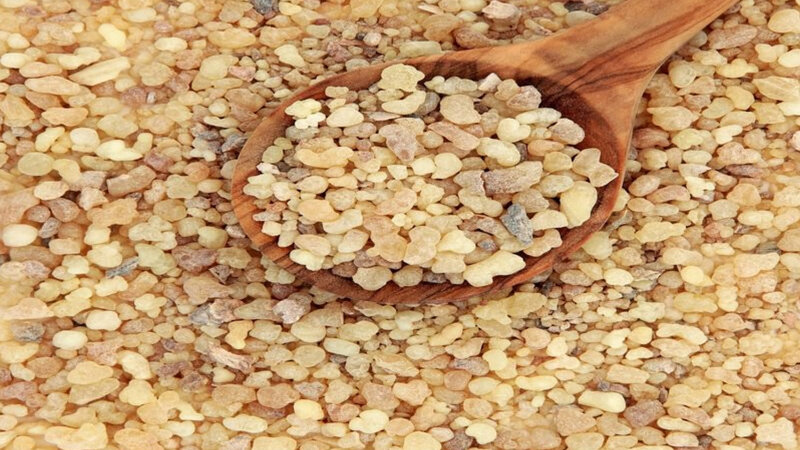Heeng/Hing (Asafoetida) Powder: Spice For A Healthy Life
Ferula Asafoetida Linn, also known as Hing or Heeng, is a perennial herbaceous plant and is considered the most significant species among the 130 species of Ferula. The plant’s rhizome and root yield an oleo-gum-resin, which is collected in earthen pots and then dried.

This dried substance is commonly used as a spice to enhance the flavor of food and is available in powder and crystal forms. In Hindi, it is known as Hing or Heeng, while in English, it is referred to as “Asafetida,” also known as devil’s dung or stinking gum. The name “Asafoetida” originated from the Latin term “ferula,” which means “vehicle” or “carrier.”
In addition to its culinary uses, Asafoetida has various health benefits. It is known for its digestive properties and is often used to alleviate gas and bloating. Asafoetida also possesses antimicrobial and anti-inflammatory properties, making it useful for treating respiratory issues and promoting overall well-being.
What is Hing/Heeng?
Asafoetida is also known as Hing or Heeng it is an ingredient that is made from the oleo-gum-resin which is obtained from the plant called Ferula asafoetida L plant. It has a unique strong pungent smell when raw but dulcet and garlicky when used in cooking.
The dried gum of the plant consists of a combination of various properties, such as about 40–64% resin, about 25% of endogenous gum, 10–17% volatile oil, and 1.5–10% of ash, besides this, it also contains asaresinotannols ‘A’ and ‘B’, ferulic acid, umbelliferone and other four unidentified compounds which make it so unique.
Vernacular names
- Arabic: Zallouh; Anjadan, Hilteet; Simagh-ul-mehroos
- Assamese: Hin
- Bengali: Hing; Hingra
- English: Asafoetida
- Europeans: Devil’s dung
- Gujarati: Hing; Vagharni
- Marathi: Hing; Hira
- Hindi: Hingra; Hingu
- Oriya: Hengu; Hingu
- Kannada: Higu; Ingu; Hing
- Persian: Angoza, Nagoora, Amma, Nagsatgudha, Angzoo, Anksar
- Punjabi: Hing
- Sanskrit:Ramatta; Bhutnasan; Hingu; Sulansan; Bahleeka
- Suraini: Halteesa
- Telugu: Ingura; Inguva; Ing
- Turkish: şeytan boku (devil’s shit), Şeytantersi (devil’s sweat), or şeytanotu (the devil’s herb)
- Urdu: Hilteet, Hing
What is hing made out of?
Hing is a type of resin that is made from a plant called ferula, which is collected from the stem, bark, and root. The ferula plant consists of a large number of schizogenous ducts. After a period of five years, the roots have stored a sufficient white gum resin emulsion into it.
At that period of time, the plant is about 12 to 13 cm thick at the crown, with a large flower stem about 10 cm thick and 2.5 to 3 m in height. At the end of March, just before the plant is about to flower, the top of the root is laid bare and the stem is cut near the crown, exudation flows from the cutting surface.
Until the resin becomes hardened and is protected by the dome cover stick and leaves. After a week or two, the hardened resin gum is discarded outside. Again a slice of the root is cut and the juice is allowed back to exude and gathered. This process is repeated several times with an interval of about 10 days for several months.
According to Santapau & Henri, (1973), there are more than 130 species of Ferula found in the world, and among it only some species of plant yield Asafoetida.
Synonyms
- Assam: Hin
- Sanskrit: Ramatha, Sahasravedhi
- Bengali: Hing
- English: Asafoetida
- Gujarati: Hing,
- Punjabi: Hing
- Vagharni Hindi: Hing, Hingda
- Oriya: Hengu, Hingu
- Kannada: Hingu, Ingu
- Marathi: Hing, Hira
- Kashmiri: Eng
- Malayalam: Kayam
- Telugu: Inguva
- Tamil: Perungayam
- Urdu: Hitleet, Hing
Heeng/Hing: Ayurvedic View
In the ancient texts of Ayurveda Ferula assafoetida L is described as “Hingu”. It has been used as a flavoring of food and as a remedy for various ailments. For several centuries of constant use, it has become a trusted traditional medicine.
The Asafoetida (Hing) has been also referred to as the “food of the gods”. Asafoetida is in use since ancient times in Indian medicine for cooking as a spice.
Asafoetida balances Vata and Kapha doshas as it relives Vata and Kapha it can be useful for the treatment of various ailments.
- Neurological (paralysis, hysteria, depression, and epilepsy),
- Gastrointestinal (intestinal parasites, flatulence, weak digestion, stomach pain),
- Respiratory (influenza, asthma)
- Reproductive disorders (premature birth, very painful, difficult and excessive menstruation, vaginal discharge, and infertility.
Ayurvedic Properties
- Rasa: Katu
- Virya: Ushna
- Guna: Tikshna
- Vipak: Katu
- Dosha: Balances Vata, Kapha and increases Pitta
Uses In Different Parts Of The World
- Pakistan: People in the area of Khyber Pakhtoon Khowa hang a small bag of Asafoetida around their neck or tie them around the arm to keep them safe from bacterial, seasonal, and viral diseases.
- Afghanistan: People use an extract of dried gum with hot water; it is then taken orally for whooping cough, to treat ulcers, and hysteria.
- China: The decoction of the plant is taken orally as an Anthelmintic.
- Egypt: Extract of the dried root with hot water is taken orally as an antispasmodic, as a diuretic, as an analgesic, and an anthelmintic.
- Malaysia: Resin gum is chewed for amenorrhea.
- Morocco: It is used as an anti-epileptic.
- Nepal: Water extract of the resin is taken orally as an anthelmintic.
- Saudi Arabia: Dried gum is used medicinally for bronchitis, whooping cough, and asthma.
- United States: Fluid extract of the resin is taken orally as an emmenagogue, a stimulating expectorant, an aphrodisiac, an anthelmintic, and a stimulant to the brain and nerves, claimed to be a powerful antispasmodic.
- France: The gastronomers rub a little Asafoetida on hot plates from which they eat beef steaks.
- Europe: Asafoetida is considered a valuable medicine in Europe, which is used to invoke male gods, especially those of a phallic nature. There is also a myth that claims that Asafoetida was developed from the semen of a god of fertility when it was soaked into the earth.
Top Benefits Of Asafoetida
Apart from the use of spices in culinary, it is also used as a medicine. The ancient Ayurvedic texts prescribe herbs and spices for healing and therapeutic functions. Below are some of the health benefits of Asafoetida.
1. Best product for skin blemishes
Asafoetida can be used as a bleaching agent that promotes fairness and degrades dark spots, acne marks, and excess fat. The tyro-sine production in the skin promotes melanin production in human skin and that can lead to darkening of the skin, premature aging, and dullness.
Asafoetida takes control of tyrosine production. Therefore, you can flaunt radiant-free skin; using the Asafoetida face mask, and can make your skin look younger.
How to use: Make a paste of Asafoetida mixed with hot water and apply it to the affected area.
2. Natural remedies for inflammation and pain
Asafoetida is a wonderful spice that can be helpful in fighting the pain associated with toothache, menstruation, headache, and migraine. It is a spicy herb that is fully loaded with powerful antioxidants and other compounds that relieve pain.
How to use: To reap its benefits, mix a pinch of Hing powder with a glass of warm water and drink to relieve headaches and migraines. For toothache make a thick paste of Asafoetida mixed with lemon juice and apply it to the affected area.
3. Menstrual Pain & Irregular Periods
It is the spice that is considered a boon for women, as it helps to manage menstrual pain as well as irregular periods. Asafoetida contains properties that can thin the blood thus helping in making the blood flow smooth.
Asafoetida has a warming and hormone progesterone property which helps in the proper functioning of female reproductive organs and aids in bringing on regular periods. This remedy has been used as flock medicine for ages which can greatly reduce discomfort.
How to use: Bake a Heeng powder in a vessel and added it to the buttermilk along with a little bit of sugar and consume it during menstrual pain it really will help you.
4. Natural remedy for stomach gases
The stomach produces gas when our digestive system is enabling us to digest food. The use of Asafoetida regularly not only reduces the gas but also cures your bad digestive function.
Using a pinch of Asafoetida in food can not only increase its aroma with flavor but also helps to stay away from gas problems. So if you have a regular problem with a gas problem you should use Asafoetida in everyday cooking.
How to Use: Take a glass of water with a pinch of Asafoetida powder, and mix well to dissolve the powder. You can also add a pinch of black salt to it, drinking this water can solve the gas problem.
5. Natural remedy for baby gas relief
Using Asafoetida for treating gas can be the best option without side effects. It is also a well-known traditional home remedy to cure a child’s colic pain. You can use it internally as well as externally. To find out if your baby is suffering from gas, touch his belly if it looks tight, and swollen which means the baby is suffering from gas.
How to Use: Make a paste of Asafoetida and water and apply it to the baby’s navel area. For internal use take Asafoetida (crystal) about the size of two mustard seeds crush it and give it in warm water.
Note: Giving Asafoetida internally is not advisable, mostly due to its quality and purity.
How To Check Quality Of Heeng?
- When asafoetida crystals are dropped into a glass full of water, it gradually dissolves turning the water into a milky white solution.
- When asafoetida is burned it leaves no residue.
- Asafetida if adulterated when dropped into water sinks and settles and does not dissolves completely
Asafoetida (Heeng) Side Effects
According to WebMD : Asafoetida is considered to be safe for most people in the amounts which are typically found in food. Some evidence also showed that Asafoetida is possibly safe when taken orally as medicine.
Few people have stated problems with Asafoetida it causes belching, intestinal gas, diarrhea, swelling of the lips, seizures, blood disorders, headache, and other side effects.
- Children: Asafoetida is unsafe for infants when taken orally because it could cause certain blood disorders.
- Pregnancy: It is unsafe to take Asafoetida orally if you are pregnant as it could cause a miscarriage so avoid use.
- Breastfeeding: It is also considered unsafe if consumed orally while breastfeeding because some chemicals in Asafoetida could pass into breast milk and cause bleeding disorders in infants so avoid it.
Today the People around the world have become more conscious, started eating organic. Consuming tasty flavored food with health benefits can be the best idea. Using Asafoetida Spice can work in a disease as quickly as any modern form of medicine and have proven to have no side effects. So regular use of spices can make a person to remain hail and hearty for longer period.



























Kaunda Need sir